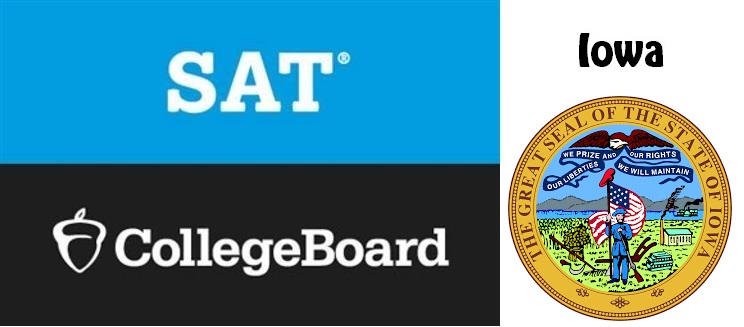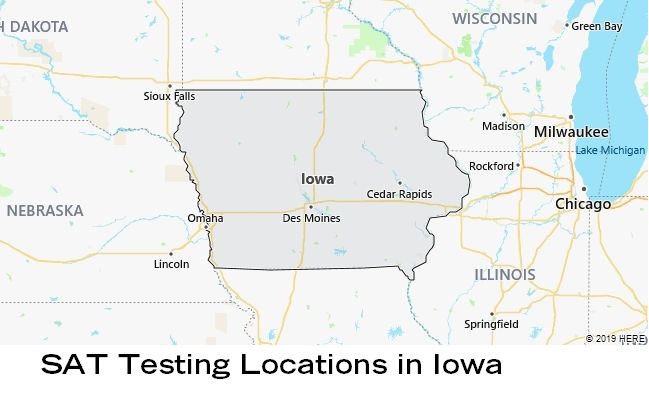According to the College Board, there are 8 test centers for SAT and SAT Subject Tests in Iowa. Please note that before you register either of the SAT exams, you should choose your test date and test location. Each testing location is affiliated with an educational institution, such as high school, community college, or university. The following test centers administer one or more of SAT tests in Iowa.

2019 – 2020 SAT Test Dates in Iowa
- March 9, 2019
- May 4, 2019
- June 1, 2019
- August 24, 2019
- October 5, 2019
- November 2, 2019
- December 7, 2019
- March 14, 2020
- May 2, 2020
- June 6, 2020
- August 29, 2020
- October 3, 2020
- November 7, 2020
- December 5, 2020
SAT Testing Centers in Iowa
ALGONA HS
CENTRAL HS
COE COLL
DOWLING CATHOLIC HS
DUBUQUE SR HS
KIRKWOOD CC
OTTUMWA HS
UNIVERSITY OF IOWA

Iowa Overview
Iowa is located on the territory of the Interior Plains, the state is characterized by a hilly terrain, gradually rising from the southeast to the northwest and with numerous river valleys. Almost all of Iowa’s land is actively used for agriculture.
Iowa has a humid continental climate. Winters here are usually relatively cold and snowy, summers are warm and humid. Precipitation falls all year round, but it is mainly spring and summer rains.
The first European explorers arrived in Iowa in 1673, members of the French expedition of Jacques Marquette and Louis Jollier, descending the Mississippi River from present-day Canada down towards the Gulf of Mexico. Then these lands were declared belonging to France, becoming part of the province of Louisiana, the colony of New France.
After the United States of America bought Louisiana from the French in 1803, the lands located west of the Mississippi began to be developed by American explorers. In 1805, the territory of Iowa was described by the famous American pioneer Zebulon Pike, in 1808 the first settlement, Fort Madison, was founded.
The state got its name in honor of the Iowa Indians, one of the Sioux Indian peoples who lived on these lands.
In subsequent decades , the US government consistently pursued a policy of pushing the Indian tribes to the west, which led to conflicts and armed clashes. In 1838, the Territory of Iowa was created by the U.S. Congress, and in 1846 Iowa became the twenty-ninth U.S. state.
In the second half of the 19th century, Iowa developed rapidly, largely due to the construction of the railroads. Since the beginning of the 20th century, cities and industry began to grow in a predominantly rural state.
About 215,000 people now live in Des Moines, Iowa’s largest city and capital.
The economy of modern Iowa is quite diverse. Traditionally, agriculture is well developed here, both farming and animal husbandry. The state is part of the ” grain belt ” of the United States, it is called the “corn state” and even the “food capital of the world.” At the same time, there is a fairly powerful industry in Iowa (primarily food), finance and insurance are developed.
